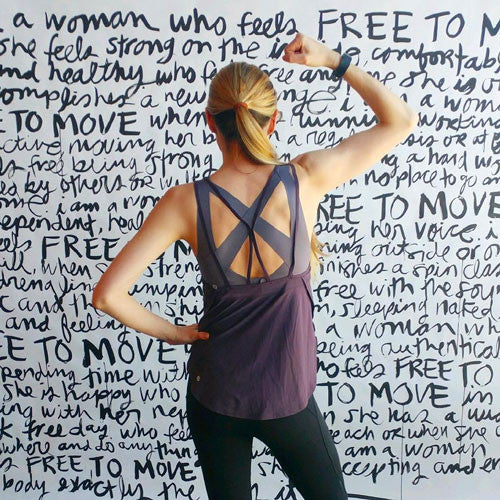
Pilates, Barre, Plana, or Yoga, Oh My!
We bet you're confused when it comes to all the available workout options today. Right? We're taking apart four popular styles here, so that you can decide which one is really speaks to you (and your body, of course).
Yoga

Let's start with the most ancient of these four body awareness activities. In comparison to Pilates, Barre and Plana Forma, yoga is similar in that it is the practice of different poses, however it focuses chiefly on breath control, meditation, and the mastery of the postures to achieve general health and relaxation. There is no one specific type of yoga that "works" for everyone. Inasmuch as there are different types of people, yoga is just as diverse. If we were to compare it with cross-training, the "best" type of yoga a mixture of yoga styles.
Having a mix that targets your specific concerns is actually what will benefit you in the long run, if you choose yoga as your main fitness practice. Let's say you want to practice yoga because you want to have something that both helps you lose weight/burn calories, increase strength, and tone your body, then go for a weekly workout regimen that incorporates Vinyasa and Hot Yoga on alternate days (for the calorie-burning benefits), and a calming like Yin or Restorative yoga.
TIP: We recommend if you're a beginner to start with Hatha (the most basic of them all) to learn how to do the various yoga poses, before you get into the more advanced types.
Pilates

Developed by Joseph Pilates in the early 20th century, the Pilates workout introduced to the world the concept of "core strength" through a "body-mind" connection. Pilates himself believed that physical health and mental health were inseparable, so he developed his exercise system to strengthen both. Through the mastery of certain controlled movements (which Pilates himself called "contrology)," the Pilates practice is meant to achieve flexibility, body strength and endurance that revolves around the principles of concentration, control, centering, flow, postural alignment, precision, relaxation and stamina.
The Pilates equipment we see today were all developed by Joseph Pilates himself. The most popular apparatus, the Reformer, works every part of the body, and is complemented by the other apparatus that Pilated himself designed, i.e. the Wunda Chair, High "Electric" Chair, Spine Corrector, Ladder Barrel and Pedi-Pole. (Locally, you can find full-on Pilates workouts at our partner brand, Options Studio, where we have an ongoing partnership at the Timog, Quezon City branch! Click here to see their offerings.)
Barre 3™

An international brand, Barre 3™ is a low-impact total body workout developed around the concepts of ballet, yoga, and Pilates. The workout's "3-step sequence" that incorporates the "hold, move small, move big" sequence was designed by doctors, physical therapists, and anatomy specialists to achieve overall body toning and functional strength.
The yoga component is in mastering certain posture holds to achieve alignment of the body, muscle-building endurance, also mindfulness through proper breathing. It is then followed by Pilates-inspired small movements, which warm-up then work the muscles to exhaustion so that they build up into lean muscle and strengthen the body's core. The big movements (inspired by ballet) finally help to elevate the body's heart rate and lengthen the muscles.
Plana Forma
Plana FORMA (yes, spelled with all caps for the "forma") is a barre technique of cross training, which combines dance, pilates and yoga. Toning and lean muscle-building is the name of the game here, so if you want toned yet lean (not bulky) arms, abs, butt and thighs through a fun, active yet no-nonsense workout technique, go for this! Plana FORMA makes use of bodyweight to work your muscles, so be prepared to work yourself out ragged each time, but with proven effective results. Plana FORMA practitioners are known to have lean bodies, a better metabolic rate, and are less prone to injuries.

Leave a comment